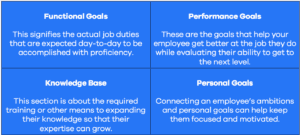Evaluating Business Performance: Lessons Learned from the Worst Boss Ever

“Chainsaw Al” Dunlap was once called the worst boss in America. Known on Wall Street as a “turnaround specialist”, Chainsaw Al slashed and burned his way through companies using his machete on their income statement. While evaluating business performance would’ve helped him get a better read on the changes needed to improve long-term results, he preferred to cut costs indiscriminately.
His modus operandi made him notorious for massive firings that put tens of thousands of people on the unemployment line. Chainsaw Al closed manufacturing plants, and gutted companies all under the guise of “shareholder value.” His reputation as “America’s Worst Boss” was cemented when he cut so much of Sunbeam (a company that produced small appliances and electronics), that the company collapsed. It was later uncovered that a massive accounting fraud had taken place under Chainsaw Al’s watch. He was banned for life from ever running a publicly-traded company again by the SEC.
What can we learn from Chainsaw Al’s legacy? The shorthand takeaway from Chainsaw Al’s “slash-and-burn” approach is that a company’s performance needs its own yardstick. What works at one company isn’t a measure for what works at another. There isn’t a “one size-fits all” approach to corporate performance.
A Roadmap to Evaluating Business Performance
So what is the key to evaluating business performance? Let’s unpack this seemingly simple question and restate it as, “what are the key metrics I should be using to measure performance in my company?” When we state our inquiry this way, we are able to take our vision for the company, its purpose or social mission and use what we care about (using our “why” as Simon Sinek says) to guide the company. This strategy helps operationalize what we’re committed to achieving and uses key performance indicators as our means to measure our results.
After creating meaningful metrics to measure our results, the next big question is, “how do I get the employees to buy in?” It’s a question that takes us back to the beginning of your relationship with your individual employees—why did you hire them in the first place? What was it about this individual that you found to be a great fit for the company? Reacquainting employees with what made them so passionate about the company and their job is a great place to start a conversation around their current activities, and then aligning around the results you’d like to see.
In this kind of conversation, you can open the door to see what’s working for the employee and what they’d like to see improved upon. Allowing a space for that conversation could make a huge difference in the kind of projects and programs your employee will align on. Deep listening from an owner or manager can make the difference between a high degree of employee engagement or a “I’m just doin’ my job” mentality. To paraphrase Jim Collins from his landmark book, “Good to Great,” ‘employees already come to us motivated. We have to make sure that we don’t demotivate them.’
A 2018 Gallup Research report shares that a full 87% of employees are not fully engaged at work. That number is staggering. Think about your employees in relation to that statistic. Think about who you believe to be engaged and then the ones that aren’t. Do you believe that inside of your organization that 80% of your employees are disengaged? No, of course not. But disengagement comes from somewhere.
This statistic reminds me of the survey given to elementary school parents asking them if they believe their child is average. “No, my child is above average” is the most selected response to this question. Being average is a moving yardstick dependent upon the sample of the population you’re measuring, whether it’s your child’s elementary school or employee engagement within your company. Tracking engagement often means seeing the moment where your employee became demotivated and then disengaged.
Evaluating Employee Performance
“This guy is a Rockstar, 100%!” “She’s a gem, my favorite, completely awesome.” “I’ve got two employees who are totally solid. They are the heart and soul of the team.” We’ve all heard these expressions and shared our own accolades for the employees that we think hit it out of the ballpark. When it comes to measuring their awesomeness, how do you do it? What variables in the equation sum up to awesome? Is your awesome the same as your customer’s expectation of awesome? Does a customer measure awesomeness if your employee smiles while serving them? How do you measure the number of times a person smiles in a day? Let’s look at a better way to crack this egg. It’s called the Balanced Scorecard.
When large corporations work to measure employee performance they often times use a tool called a Balanced Scorecard that helps employees and managers track a rewarding career path while letting the employee know what is expected in order to achieve proficiency at their current role, and the key performance indicators that will be used to measure their results. This method is an in-depth process that requires both time and financial resources to render meaningful results. I’m going to break down the process simply for small businesses so that small companies can access the power and focus of the Balanced Scorecard. Using this approach to measuring performance will help you as a business owner focus on the results you’d like for your employees to produce. This also gives your employees a roadmap to follow so they know where the goal line is and where the rewards in achieving goals lies.

You will find that this simple quadrant system will help you connect your company’s key performance indicators (KPI’s) with your employee’s day-to-day focus. So many small business owners waste time and money because of the confusion between what is expected and what is delivered by the employee. This model could help reduce the number of your business headaches by adding clarity to your people processes.
One addition to think about when letting employees know your expectations and what they’re responsible for is to assign a line item on your Income Statement that they or their team is responsible for. This means you have to show your P&L to employees so that they can manage their jobs or departments from quarter to quarter. This method is called “Open Book Management” and it was used to help turn Caterpillar (NYSE: CAT) around. This was the method that was chosen instead of the Chainsaw Al approach of one size fits all cost cutting. Educating employees about financial metrics so they can be responsible for the financial results of the company is key to helping them understand how their own activities impact the bottom line of the company, and ultimately their own personal bottom line.
So how do you implement a Balanced Scorecard inside your small business? Begin with an introduction to the system during your employee onboarding process so they understand how the Balanced Scorecard works. Then schedule a one-on-one meeting with your employees after their first 30 days or after their probationary period has been met. The sooner a scorecard model is implemented, the faster it will be normalized and used as a guide inside your company. For established employees and managers, using a task team approach to integrate the process is most effective. Find a handful of employees who are excited by the idea and have them help you come up with a plan to integrate the Balanced Scorecard for company. Employees who help other employees understand the change required inside helps improve the implementation process.
“You can’t improve that which you do not measure”
-Edward Deming
Key Metrics to Track When Evaluating Business Performance
A lot of small business owners don’t spend much time tracking KPIs for their business beyond the financial metrics that you get from QuickBooks. When evaluating business performance, it’s important to look beyond your financials to see how your business is performing.
Marketing
Marketing metrics and analytics are something that most of us in small business are familiar with. What kind of metrics you track can help you understand where your marketing is working and where it needs improving.
Common Marketing KPI’s
- Clicks or opens in each of your social media channels or email sales
- Cost per lead per channel
- Cost per conversion
- Retention rate
- Churn numbers
Customer Service
Customer service offers great insights about customer expectations, trends and if you’re keeping your current customer base happy. Finding metrics that help you first maintain and then grow your customer relationships will only help you better understand what your customer wants and needs. This could improve your LTV (lifetime customer value) and increase the percentage of profit you can expect from each customer.
Common Customer Service KPI’s
- Resources spent on individual paying clients
- Resources spent on non-paying clients
- Number of inbound calls
- Percentage of customer issues solved on initial call
- Net promoter score
Financials
Yes, financial metrics are important to growing your business properly and profitably. Knowing what metrics you’ll be measuring will help you better understand your financial performance.
Financial Performance KPI’s
- Gross profit margin
- Net profit margin
- DSO (days sales outstanding)
- Acid-test ratio
- Budget vs. Actual Spend
Supply Chain
If you are building a product-oriented business like a fashion or furnishings business, you might have a social or sustainability promise. If so, you will want to be transparent about where your products come from, and who is making them.
Supply Chain KPI’s
- Percentage of recycled or up-cycled waste from production
- Third-party certification for fair trade or sustainably produced materials
- Carbon footprint of production and / or delivery
The operations component of every business is where there are hidden profits. Just examining how you and your staff operate the company can help you identify hidden waste or errors inside the operation itself. Looking at how you are delivering to the customer could yield excellent rewards in the time spent measuring your projects and how they are managed.
Project Management KPI’s
- Cost performance index
- On time delivery
- Cost variance
- Quality metrics
Employee Engagement
Here are the employee engagement sample metrics that you can use inside to help suss out how deeply engaged your employees are with your firm and their current activities. Remember, 87% of employees are not fully engaged. Making sure you measure the pulse of employee engagement can mean the difference between achieving your goals or falling short.
Employee Engagement KPI’s
- Employee net promoter score
- Employee turnover
- Employee absenteeism
- Employee referrals
Setting your key performance indicators helps you, the business owner, understand how the business is performing. Connecting your employees to your KPI’s through a balanced scorecard system can be one of the most powerful things that you can do in your business to manage expectations, retain and reward the employees that help you achieve your mission and goals, and bring clarity of vision to the day to day activities that your business performs. Chainsaw Al might have thought that if he just cut enough the business would take care of itself. Responsible business owners know that engaging employees and evaluating business performance is the pathway to fulfilling on their mission and purpose. After all, the company’s results are a direct reflection of your vision and leadership.




